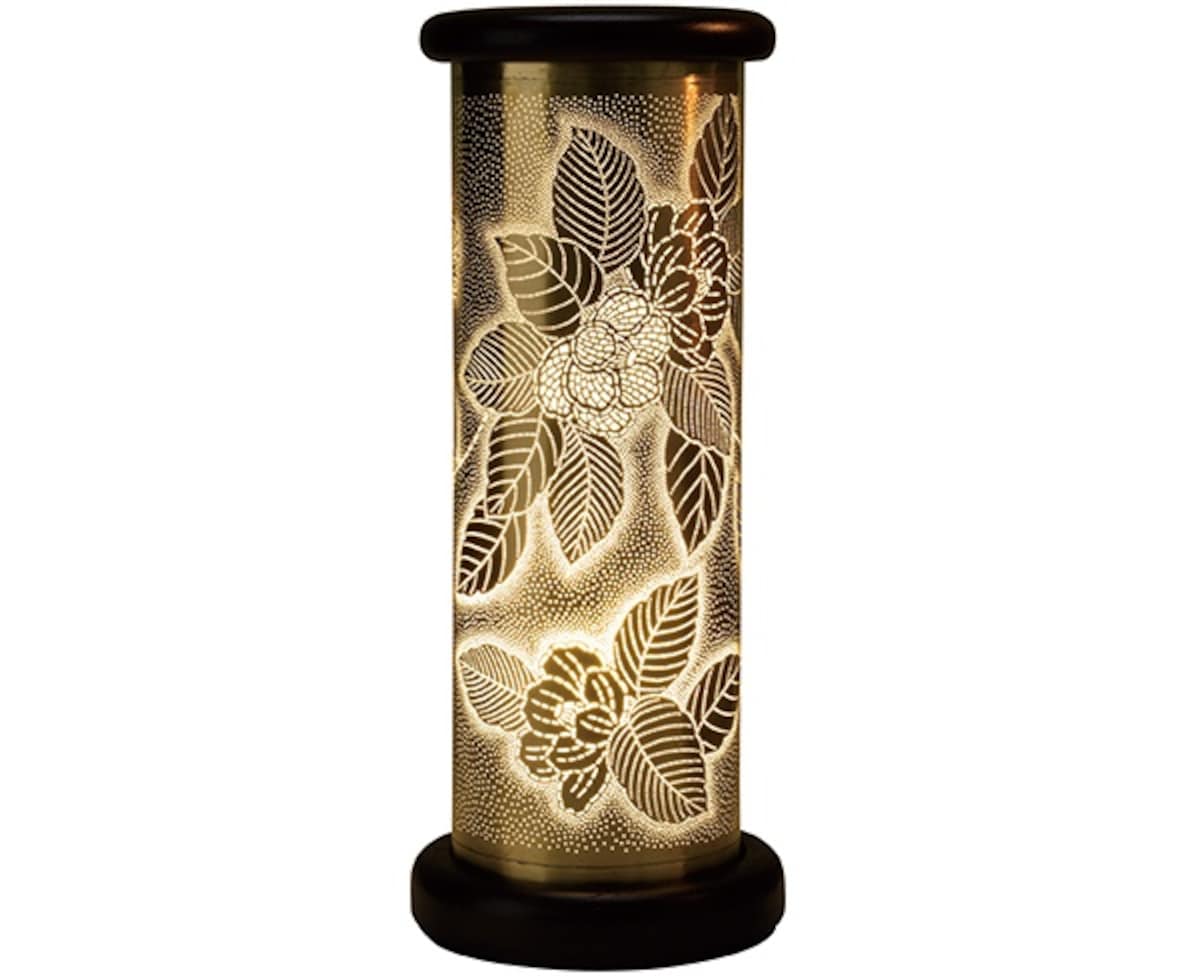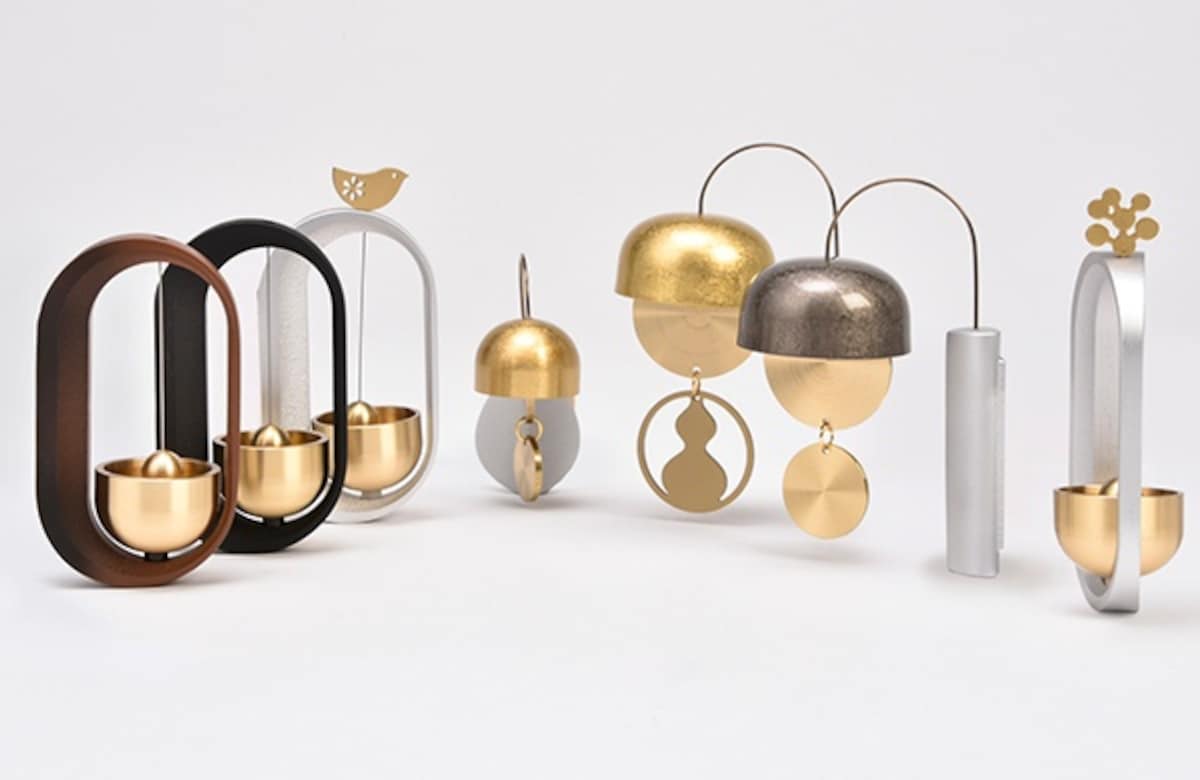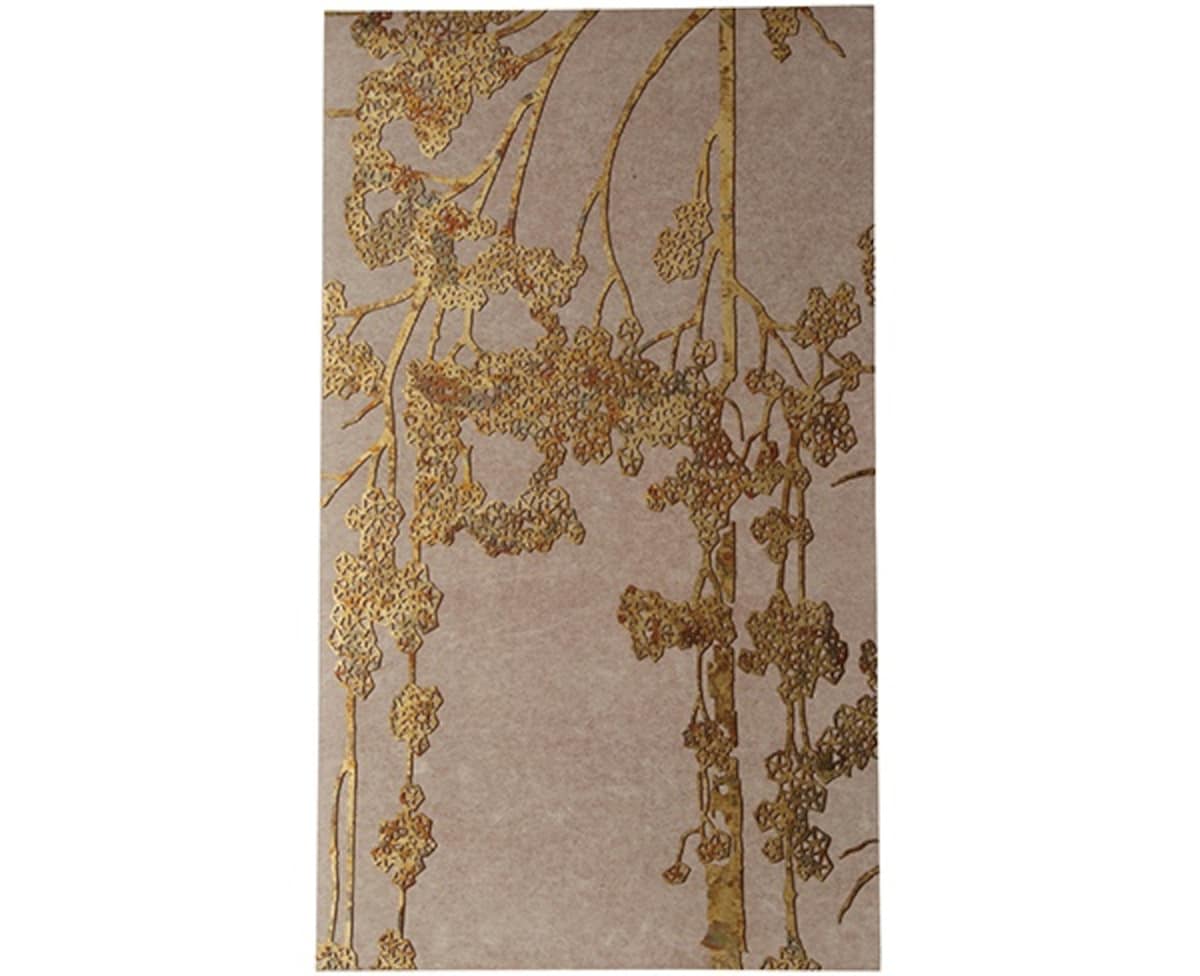Top 10 Coolest Things in The Wonder 500™
The Wonder 500™ definitely has an incredible list of captivating and impressive items perhaps we all want to get our hands on. However, seeking out all 500 could be a lengthy process for the everyday innovative item hunter. So, to help narrow down the search, we picked our top 10 coolest items to get you started on your quest to seek and buy!
By AAJ Editorial Team10. Cast Metal Mosquito Repellent Container

https://thewonder500.com/product/kuwana-imono-no-kayariki-kuwana-cast-metal-fire-container-for-mosquito-repellent-smoke/?lang=en
This fire container for mosquito repellent smoke that holds mosquito coils was made using cast metal techniques that have been handed down in the city of Kuwana for more than 400 years. Since mosquito repellent coils are lit with a flame, the container must be safe. This product is quite heavy and stable, so there are no worries about knocking over the mosquito coil, but even if it were to happen, the cast iron would not break. Also, the lid can be removed so the inside can easily be washed by hand when soiled with soot. The lid features a design based on Ise dyed pattern paper, a traditional craft from Mie Prefecture used in kimono.
Smoke and the smell wafting up from a mosquito repellent container are typical summer sensations in Japan. Use this elegant yet simple and stable piece to evoke a sense of summertime in Japan. It is a collaboration among three parties, with project and design headed by Hiroshi Yamasaki, the decorative pattern by Suwamiya, and production by Marude Co., Ltd.
9. Kagozome Toro Lantern
The Kagozome dyeing technique is today carried on only at the Nakano Keisen Factory in the city of Koshigaya in Saitama Prefecture. Traditional craftsman Tomeo Nakano uses a precious brass cylinder made with an etching technique as a mold, and simultaneously dyes the front and back of an ayukata (informal kimono) fabric using two cylinders with different patterns. The name Kagozome comes from the pattern, which resembles the shape of the cylinder and the mesh of a net.
Ise Katagami (paper stencils for dyeing textiles) patterns are applied to the brass. These are historic traditional Japanese patterns that reflect the popular trends of each period.
This Kagozome Toro lantern was created in an attempt to convey and revive the Kagozome technique that had once died out. Japanese paper is inserted into the brass cylinder used for Kagozome and made into a lampshade. The base is finished in a traditional lacquer from Kaga (the old domain now split into Ishikawa and Toyama Prefectures) known as Yamanaka urushi. The light that penetrates and spreads through the Japanese paper is soft and creates a relaxed mood.
8. 'Doarin' Door Chimes
An orin is a Buddhist bowl that is sounded when reading sutras. In Japan, its sound has been used from olden times to purify places by exorcising evil spirits.
The Doarin is a brass orin fashioned into a doorbell using traditional Takaoka copperware techniques. Its timbre, which is said to increase the flow of comforting alpha waves to the brain, reverberates pleasantly each time the cover is opened and closed, putting the listener into a refreshed and gentle state of mind.
There are various simple and beautiful designs, and one can choose according to one’s taste from the differing timbres. Multiple door chimes can be combined to create enjoyable harmonies. These light and transparent-sounding chimes will surely exorcise misfortune coming from the outside and announce visitations of happiness.
7. Four Seasons Card-Making Stamp Kit

https://thewonder500.com/product/karakami-kit-shiki%E3%80%80four-seasons-card-making-stamp-kit/?lang=en
Karakami, a paper art that came from the Tang Dynasty of China more than 1,200 years ago, is still produced today in Japan as a traditional handicraft. The beauty of this art transcends the ages and is loved as an indoor decoration on fusuma sliding doors and wallpaper.
With the Shiki (Four Seasons) Karakami Kit, you can print traditional patterns of Kyoto karakami by hand. This is a top-shelf item overflowing with elegance with its real woodblocks and pigments. Because the instructions are complete with pictures, those from overseas can easily create prints as well. After creating Kyoto karakami, you can add a message to use them as postcards. The included paulownia box is also perfect as a gift for a special person.
Experience the delicate beauty of Japanese sensibilities through this traditional Kyoto handicraft.
6. Upside-Down Mount Fuji Glass
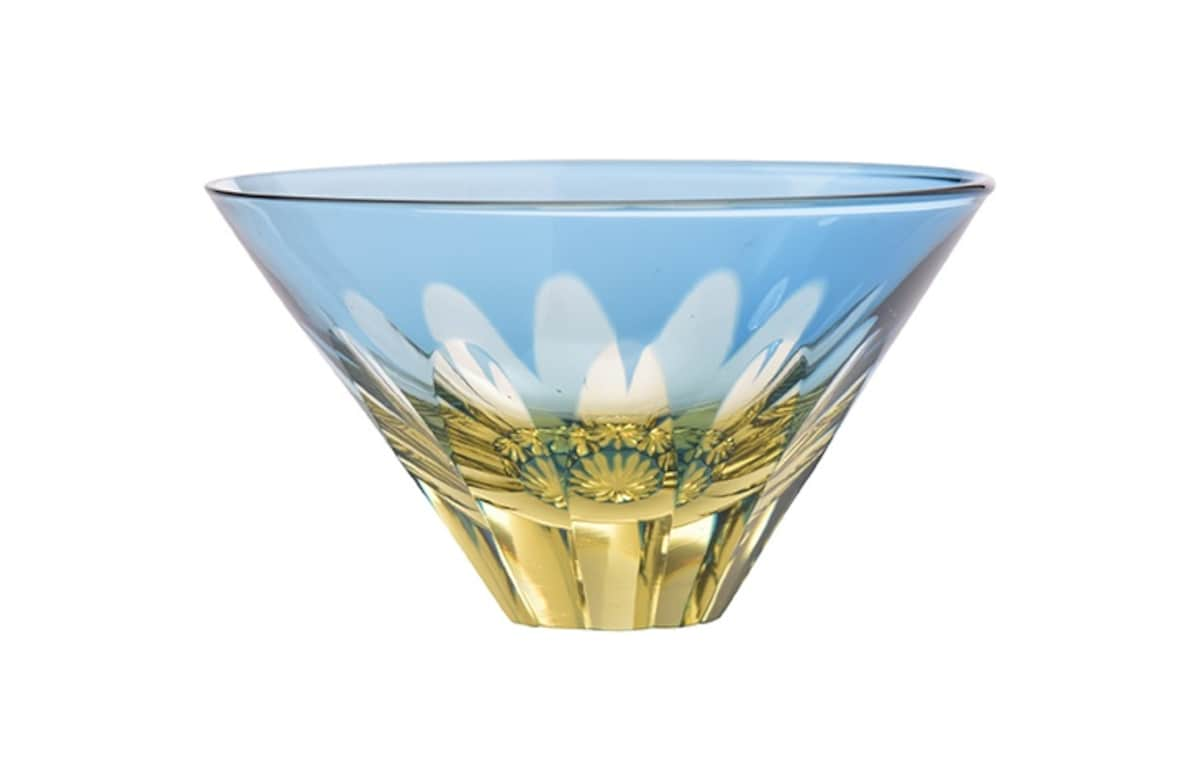
https://thewonder500.com/product/edo-glass-guinomi-sakasa-fuji-upside-down-mt-fuji-sake-cup-edo-glass/?lang=en
Edo Glass Guinomi Sakasa Fuji is a sake cup (or guinomi) created from a traditional craft that has been passed down since the Edo Period (1603-1868). Glass that has been melted at a high temperature of 1,400°C (2,552°F) is wrapped around an iron pole, then blown, pushed, and lengthened by hand to shape into glass pieces. Edo kiriko, which is decorated with a pattern called kiriko, is a traditional craft representative of Tokyo that is famous throughout Japan for its beauty.
This glass is made from Iroseki glass, which uses a glassblowing method producing several layers of glass that was developed over many years of research and maintains the traditions of Edo kiriko. It captivates the eye with the beauty of the colored glass and the gorgeous light reflected within. Looking from above, the glass depicts fireworks, but when placed upside down, it becomes Mount Fuji. This product was crafted to create an outstanding product that symbolizes Japan.
5. Samurai Armor Bottle Covers
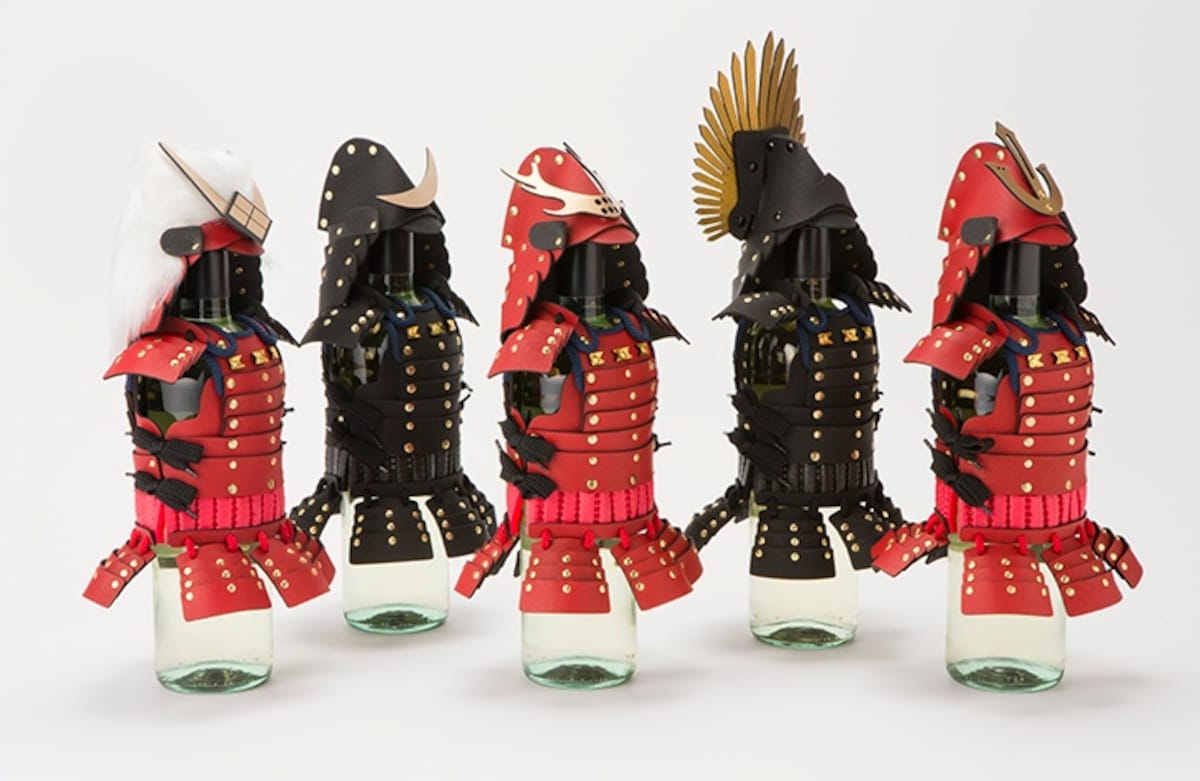
https://thewonder500.com/product/samurai-age-bottle-cover-samurai-yoroi-samurai-armor-bottle-cover/?lang=en
About 500 years ago, Japan was embroiled in an age of warring states known as the Sengoku Period (1467-1590). Active during that time there were five well-known warlords, Date Masamune, Sanada Yukimura, Mori Motonari, Takeda Shingen and Toyotomi Hideyoshi, and in honor of these men, Staff has given these names to its bottle covers. Resembling body armor, or yoroi, these bottle covers are handmade with painstaking care to as closely as possible look like the real thing. The dignity of body armor is left intact, and being made from lightweight and flexible materials, the small armor can be used to cover Japanese sake or wine bottles, transforming them into the samurai warriors of the Sengoku Period.
Small, compact, and easy to carry by visitors to Japan when returning to their countries, they make great souvenirs for people who are interested in Japanese culture. These bottle covers will without doubt make conversation pieces at bars and have a powerful presence in interior settings.
4. Kabegami Gilding Wallpaper
This luminous wallpaper was created by applying both the traditional ozuwashi technique of Aichi Prefecture and the gilding technique of France. Further, it is the product of a Frenchman with an interest in Japanese paper that came together with a local and traditional producer, Ikazaki Shachu Inc.
In 2008, a French designer moved with his family from France to the town of Uchi in Ehime Prefecture, and stayed for about two years. During this time, he was inspired by the richness of the nature and people around him and put this inspiration into his designs. He even worked to show the craftspeople of Ikazaki Shachu gilding techniques.
Through this collaboration and the melding of styles from the East and West, a truly unique wall treatment has been born. It can be cut and applied in panels or used in other creative ways off the wall. While keeping some of the Japanese flair, this wallpaper gives any room an added sense of luxury.



